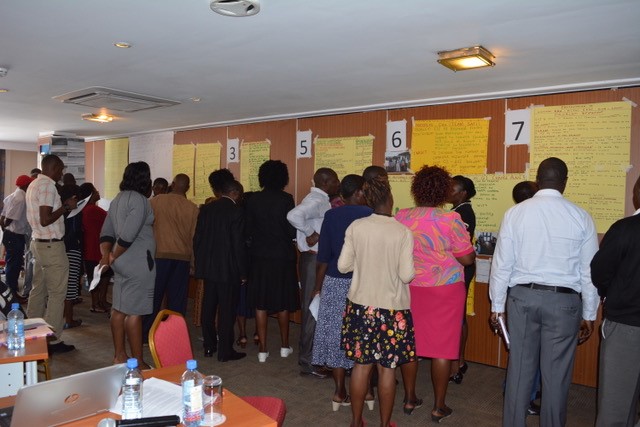“Viva la Revolución!” Long Live the Quality Revolution in Community Health!
Wednesday, 29 Nov 2017

By Vicki Doyle,
“High-quality care …… is central for reaching global health goals and a basic obligation of every health system to its users.” Kruk et al.
The Lancet, one of the oldest and best-known medical journals in the world, suggests that it is time for a quality revolution in global health. Well, it is already happening in community health services in Kenya. In October 2017 representatives from national to community level participated in what can only be described as a “festival of learning”. Twenty-four Work Improvement Teams from Nairobi and Kitui all came together for the first time to share their experience in measuring, assessing and improving quality of community health services. These multi-disciplinary teams presented simple, successful, locally led approaches to improving services in their communities. By using a systematic approach to collecting, analysing and using community health data they have improved referral rates to facilities, increased facility delivery, increased the number of children participating in growth monitoring, increased CHV household visits and improved data quality with very few additional resources. It is these Work Improvement Teams who are spearheading the quality revolution in Kenya - starting at where it matters most - with the community.
John Ndambuki, a Nursing Officer at Kyuso Sub County Hospital, Mwingi North said “I have been involved in facility based quality improvement, but I never thought this could be possible at community level…but it is happening.”
In health systems worldwide, we recognise there is gap between what we know and what we do. When working at the community level it is important not to over-complicate things. If we are serious about quality of community health services, we must ask ourselves every day; have we actually delivered the right services, every time, to every community member, to the best of our knowledge?
All people working in the health system already strive to improve access to high quality health services for all Kenyans, but to achieve a quality revolution we must do something new or something different. This means going beyond the status quo and finding the courage to respond differently to what has gone before and harness ideas to really improve how we work together to deliver services. But what does innovation really mean? In Maili Saba community, the work improvement team identified that too many deliveries were taking place at home. By thinking flexibly to generate new and useful change ideas, and then putting creative ideas into action, they have decreased home deliveries in their community. They achieved this by sensitising CHVs on the importance of individual birth plans, mapping pregnant women including their expected date for delivery, conducting dialogue days to emphasize the importance of facility based births, reallocating CHVs to different households and monthly tracking of unskilled deliveries by the Work Improvement Team. They keep a register of all pregnant women in their community and monitor their progress throughout pregnancy, delivery and the postnatal period. The WIT is confident that they can sustain this change through teamwork and embedding these activities into their routine way of working.
Innovation = creativity + action
Sustaining change is challenging as it can often seem that the whole world is against us. Nairobi and Kitui counties have been working to ensure that the right structures, systems, tools and support are in place for quality. This means that in Nairobi and Kitui, Work Improvement Teams have now been established at sub-county and community levels. These multi-disciplinary teams have been trained in quality improvement methods and receive coaching and supportive supervision. They are using a range of tools to measure and improve quality from client and professional perspectives. They are also working hard at joining up health services between the community and their government link facilities through involvement of the Facility-in-Charge and addressing issues around how community members are referred for health services.
Finally, when we talk about embedding quality this means going beyond strengthening the structures, systems, tools, and support. It entails creating a culture of quality improvement where leaders DO what they say is important, where clear and consistent messages are communicated up and down the system, where communities are involved in developing change to meet their needs, and where staff are empowered to make change.
Nairobi and Kitui Counties have already committed to the quality revolution in community health – are you ready too?